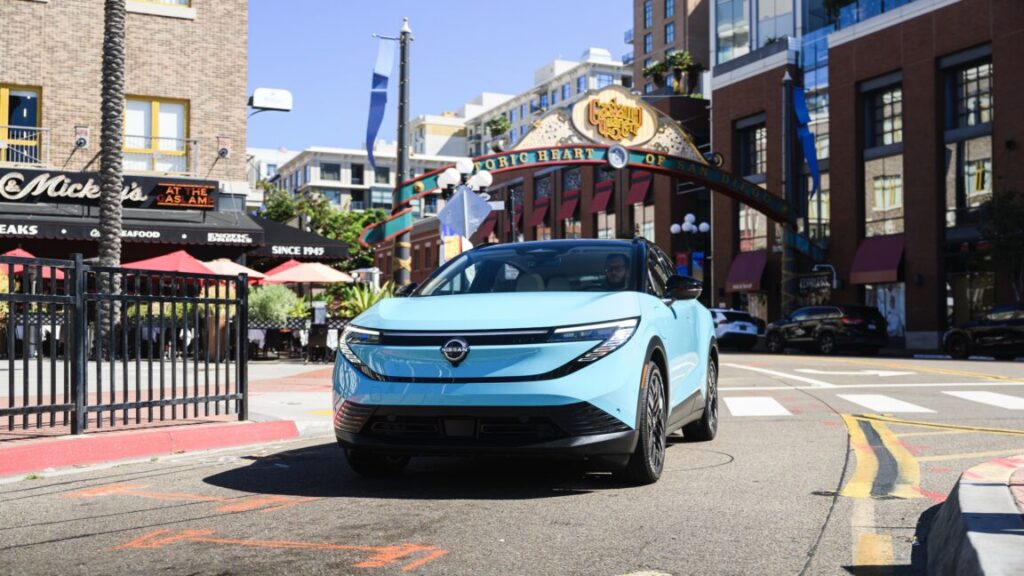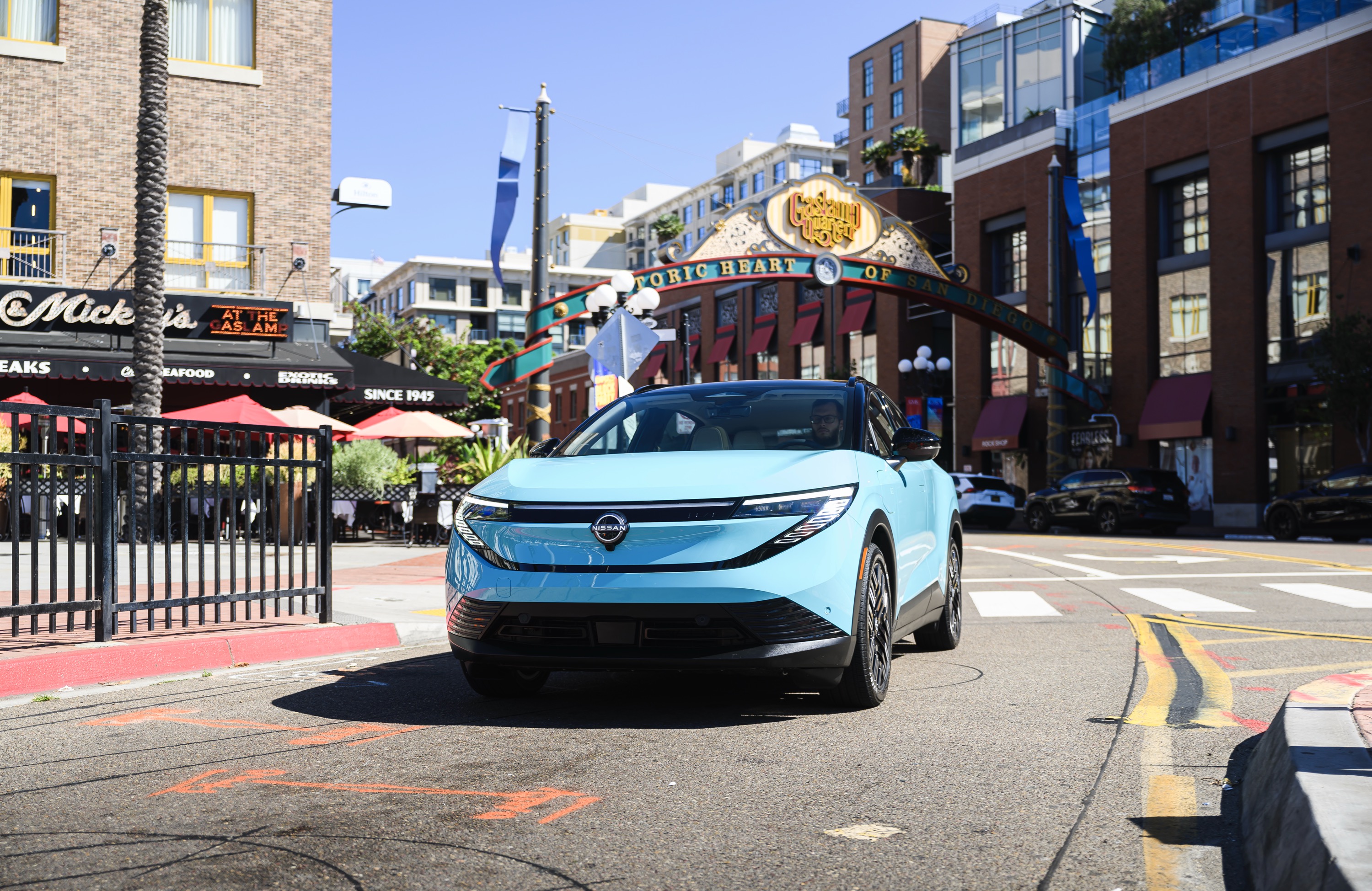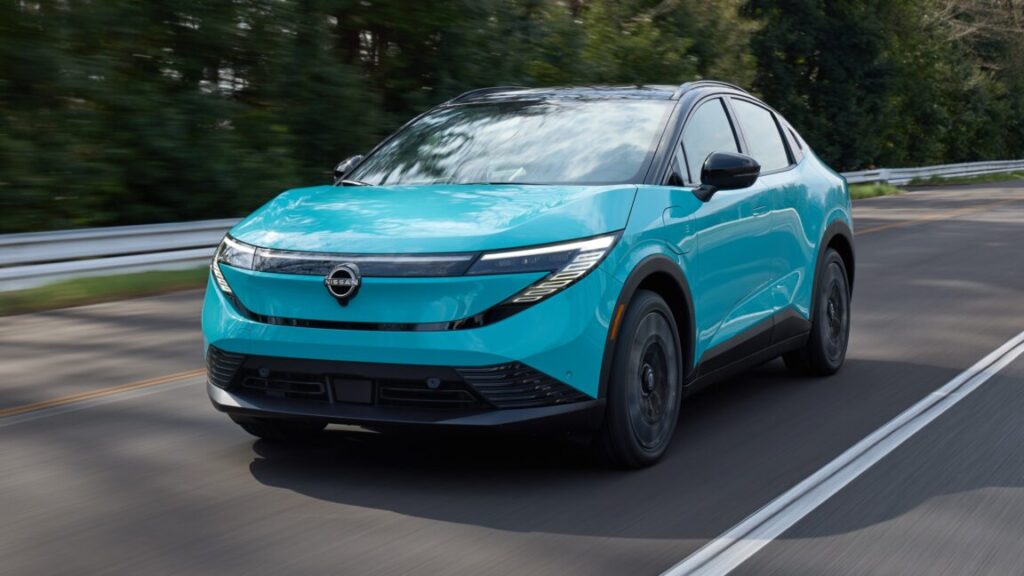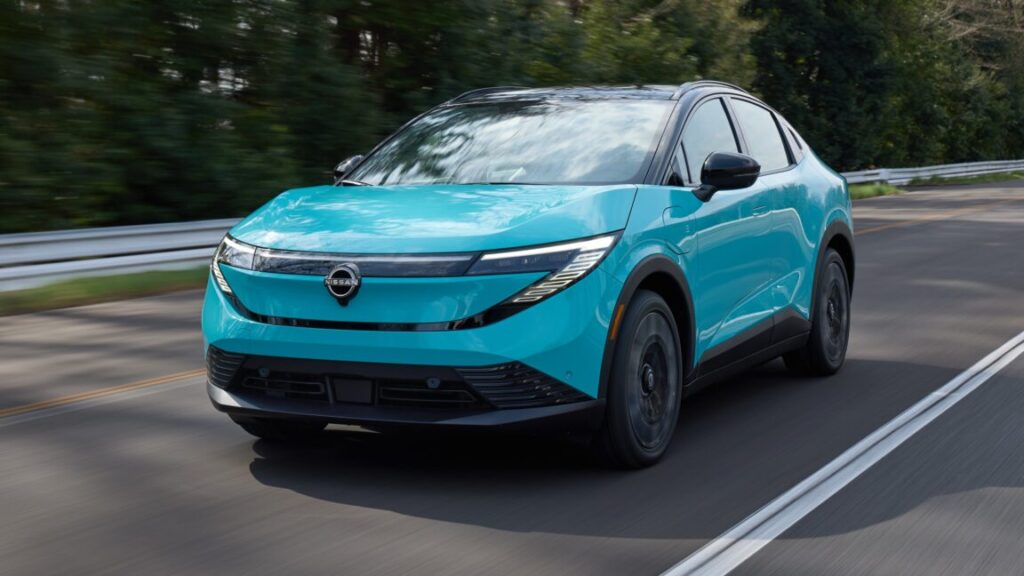Small, affordable, efficient: A lot to like about the 2026 Nissan Leaf
SAN DIEGO—The original Nissan Leaf was a car with a mission. Long before Elon Musk set his sights on Tesla selling vast numbers of electric vehicles to the masses, then-Nissan CEO Carlos Ghosn wanted Nissan to shift half a million Leafs a year in the early 2010s. That didn’t quite come to pass, but by 2020, it had sold its 500,000th EV, which went from its factory in Sunderland, England, to a customer in Norway.
Pioneering though they were, both first- and second-generation Leafs were compromised. They were adapted from existing internal combustion engine platforms, with the electric powertrains shoehorned inside. The cars’ real handicaps were a lack of liquid cooling for the battery packs. Like an older Porsche 911, the Leaf was air-cooled, albeit with none of the collector value. That’s all changed for generation three.
The new Leaf is built on a dedicated EV platform shared with Nissan’s alliance partners Renault and Mitsubishi, and which we have previously seen used to good effect in the Nissan Ariya. The benefits of using a platform purpose-designed for electric propulsion are obvious from the space efficiency. The new car is 3 inches (75 mm) shorter from the outside, but offers nearly 9 inches (221 mm) more rear leg room (yes, really), making it a much more suitable place to put adults.
Is it a sedan? Is it a crossover? Nissan
Although the new Leaf is 0.8 inches (20 mm) wider, it’s a few mm shorter and has a lower drag coefficient (Cd 0.26), so the overall effect is a more efficient shape. The nose bears a family resemblance to the Ariya, and the body style is sort of a crossover, sort of a fastback sedan, depending on your frame of reference.
Here and there, you’ll notice iconography that calls out the automaker’s name: two vertical stripes (ni in Japanese), then three horizontal ones (san in Japanese). I’m told that if you look, there are some ginkgo leaves as Easter eggs hidden in the design, but I did not find them during our hours with the car.
For now, there’s one powertrain option: a 214 hp (160 kW), 262 lb-ft (355 Nm) motor (packaged together with its inventor and reducer), powered by a 75 kWh (net) lithium-ion battery pack. The battery pack is integrated into the car’s thermal management system, which also loops in the chiller, the motor, and the HVAC system. It can fast-charge at up to 150 kW via the NACS port built into its left side (or using a CCS1 adapter here) and should charge from 10–80 percent in 35 minutes. On the driver’s side is a J1772 port for AC charging that can also work bidirectionally to send up to 1.5 kW of AC power to an external device via an adapter.
Nissan said it kept the J1772 port because it expects to sell the new Leaf to a lot of legacy customers who already have their own home charger, and it wanted to minimize the number of adapters necessary.
Let’s talk trim levels
How far it goes on a single charge depends on which trim level you’re in. Nissan brought some preproduction Leaf Platinum+ models to the first drive. These are very highly equipped, with an electrochromic dimming roof, the LED head- and taillights you see in the images, a couple of AC outlets inside the car (with the ability to power up to 3.4 kW across two outlets), and a better sound system. But it also comes on 19-inch alloy wheels, and as we all know, bigger wheels mean smaller range. Indeed, the Leaf Platinum+ has a range of 259 miles (417 km) on a single charge.
The $34,230 SV+ loses the panoramic roof and the interior V2L outlets, and you’ll have to manually open and close the tailgate at the back. And the alloy wheels are an inch smaller, which increases the range to 288 miles (464 km).
But it keeps the heated front seats and the twin 14.3-inch displays (one for your instruments, one for infotainment) with Google built in. For the Platinum+ and SV+, that means onboard Google Maps with a route planner that will take into account your state of charge and which can precondition the battery if it knows your destination is a fast charger.
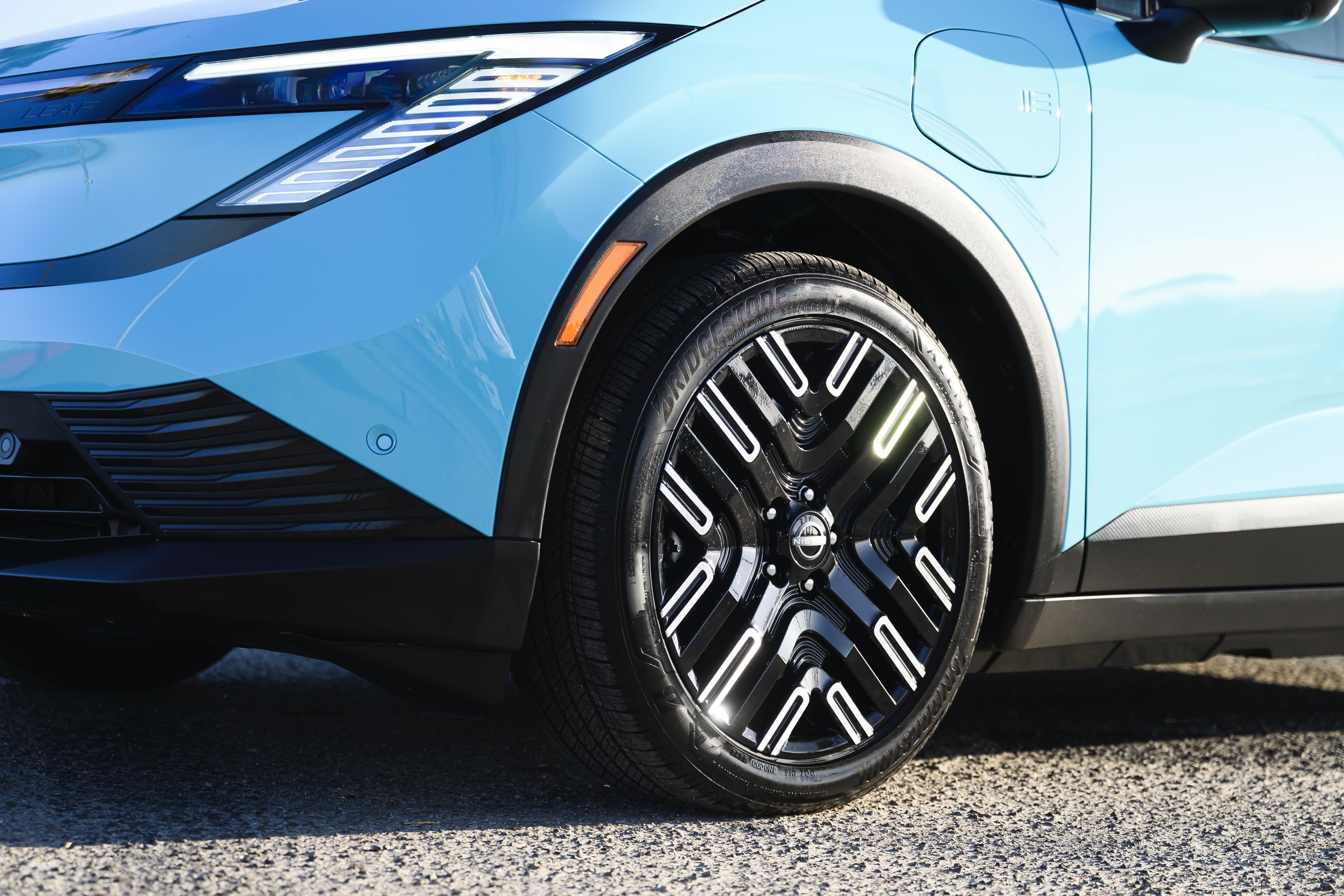
Big wheels have their drawbacks. Credit: Nissan
Nissan is only including the Google connected services for the first year, though—after that, owners will have to pay a monthly fee, although Nissan wasn’t able to tell us how much that is. Conveniently, both wireless Android Auto and Apple CarPlay are included and will continue to work after the year’s trial. And you can manually precondition the battery for charging, but automatic preconditioning via the infotainment system will not work without an active subscription.
The SV+ and Platinum can also be optioned with a heat pump ($300).
But the $29,990 S+ cannot. And it lacks the twin displays of the car you see in the images, which means no automatic battery preconditioning, although like the more expensive trims it does still have wireless Apple CarPlay and Android Auto. You also get 18-inch steel wheels with aero hubcaps, and a range of 303 miles (487 km) on a single charge. See what I mean about wheel size and range?
How does it drive?
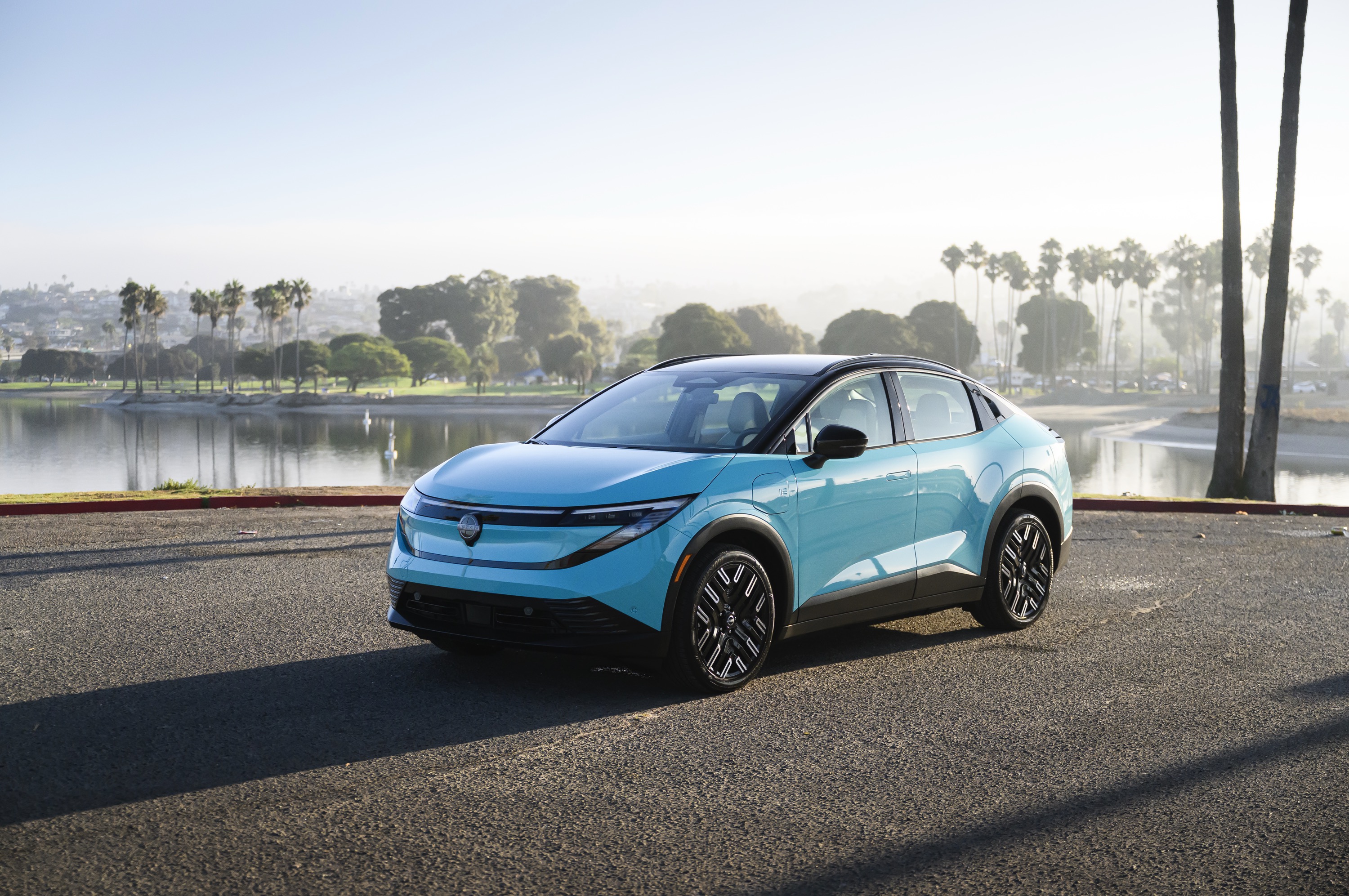
Turning over a new leaf. Credit: Nissan
I’d very much like to spend some time in an S+ and an SV+, if only to see what difference a larger tire sidewall makes to the ride comfort. On 19-inch wheels, the ride was firm and translated bumps and divots through the suspension and into the cabin. There wasn’t much body roll, but your progress will be limited by the grip available to the low rolling-resistance tires—push too hard and the result is plenty of understeer.
But this is not a “push too hard” kind of EV. With just 214 hp, it accelerates quickly enough to get out of its own way, but it’s telling that Nissan did not share a 0–60 mph time during the briefing. (If I had to guess, I’d say between 5–6 seconds, which used to be considered very rapid.)
It has four drive modes—Eco, Normal, Sport, and Personal—with three different throttle maps and two steering weights to choose from. And there are now four levels of lift-off regenerative braking, which you toggle on with the left steering wheel paddle and off with the right paddle. You can’t turn regen completely off, so like General Motors’ family of EVs, the Leaf will not really coast and loses a few mph even on downhill stretches, as it converts some kinetic energy to electrical energy.
There’s also an e-Step button on the dash, which turns on maximum regen braking and may add some friction braking to the mix. Unlike using the paddles, this setting should remain on the next time you start the car. But neither of the full regen settings is able to bring the car to a complete stop—we were told that the feature is viewed with suspicion in some markets, including Japan, and like pop-out door handles, it appears that China is in the process of banning one-pedal driving entirely.
There are plenty of real buttons and switches in here. Nissan
Both e-Step and max-regen work very well in traffic or on a twisty road, where they simulate engine braking. But given the choice, I would use the paddles to control regen braking. That’s because, like the Mercedes EQ family of EVs, in this mode the brake pedal moves toward the firewall as the car slows. The engineer’s excuse for this is that the pedal moves by the same distance it would have moved had the driver used it to slow the car by the amount it has just slowed. But my rebuttal is that the brake pedal should always be where I expect to find it in an emergency, and if that’s an inch farther away, that’s not cool.
That’s really a minor gripe, though; no one says you have to push the e-Step switch on the dash. Slightly more annoying—but only slightly—is the wind noise from the sideview mirrors, which is noticeable even at 45 mph (72 km/h), although easily drowned out if you’re listening to something on the audio system.
For a daily driver, the third-generation Leaf is rather compelling, especially the S+, although the lack of heated front seats in that model might be too much of a deal-breaker, considering how important seat heaters are to EV efficiency in winter. (Because it’s more efficient to heat the driver than warm all the air in the car.)
The SV+ is more likely to be the sweet spot—this trim level can have the Seabreeze paint you see here or a white pearl, which are alternatives to the four shades available to the S+. The Hyundai Kona EV and Kia Niro EV are probably the Leaf’s two closest rivals, both of which are compelling cars. And the forthcoming Kia EV3 will probably also be cross-shopped. All of which is good news if you’re looking for a smaller, affordable electric car.
Small, affordable, efficient: A lot to like about the 2026 Nissan Leaf Read More »
